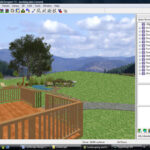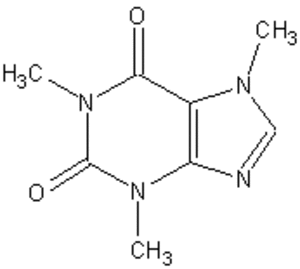With its crisp autumn air and beautiful colors, people don’t traditionally think of fall as prime planting season. Cooler temperatures and less risk of drought provide an ideal time for landscaping. Trees, shrubs, flowers and vegetables are all prime fall planting candidates. Here is an outline of what varieties fare best and guidelines for planting.
TREES AND SHRUBS
Both trees and shrubs are normally sold in containers or balled and burlapped. Young plants, normally in containers were planted there when their root systems were young. Balled and burlapped trees and shrubs were actually dug from a nursery and may have lost part of their roots in the transition. For this reason, trees and shrubs in containers may have a slight advantage for survival.
If you do purchase a tree or shrub that has been balled, make sure it has been taken care of and is wrapped in its native soil. Some plants that are wrapped in new soil aren’t wrapped right enough and the roots dry out during transport. If it is wrapped in its own soil, the wrap is tighter.
When planting remove your tree or shrub from the container, or if bought in burlap, loosen the strings. Pulling it off may remove root. Drop the tree or shrub into the hole and snip away any strings on the burlap. It will rot away over time.
Plant trees and shrubs to its natural soil line. You should be able to see markings on the bark. Dig a hole twice as big as the ball or base of the tree and one and a half times deep. Mix the soil you remove with one part peat moss for every two parts soil. This combination will help the tree maintain oil and leave space for its roots to gain a foothold.
Fill the hole with this mix until it reaches the soil line on the trunk. Water the soil until it is it is damp and use your foot to compact the dirt around the trunk so the soil is solid near the roots. Create a saucer near the bottom to put excess water and cut away any twine that may be remaining. Keep the tree or shrub watered well until it freezes.
Fall is ideal for planting trees and shrubs because it allows the roots to take root before summer heats will dry them out.
BULBS
Some flower bulbs fare better when planted in the fall. Daffodils, Crocus, Scillia, and Tulips are excellent candidates. When you are shopping for bulbs, keep an eye out for sawdust like substance. These bulbs are must likely infected. Feel the bulbs to make sure they are firm. If they are soft, they will most likely rot in the ground. Finally, look for a bulb that has little or no growth. It’s best that the bulbs establish roots in the fall, but don’t push stem growth until early spring.
When planning in the fall, make sure that you are planning the bulbs at the appropriate depth. If you don’t plant them deep enough they may freeze with the first frost. Daffodils and Tulips should be about 6 inches deep where as Crocus should be 3 inches deep. Check with your greenhouse or retailer for specific directions.
Be sure to plant your fall bulbs by the end of October so you allow ample time for them to establish roots before the winter.
Chrysanthemums are a popular fall blooming flower. You can actually enjoy the fall bloom, and if you plant them early enough they should return the following year. Be sure to plant these before the end of October so their roots will take hold.
Pansies are another popular winter flower. Plant these in early autumn (be sure to take them out of their containers) and their roots will take hold and blossom beautifully in the spring.
VEGETABLES
Some vegetables are ideal fall plants. By planting them in late August you will have a hearty garden come October. Some of the vegetables that do quite well in cooler temperatures are leafy green vegetables, broccoli, carrots, peas, kale, spinach and brussel sprouts. Shallots can be planted after the first frost.
When shopping for seeds look for key words like cold hardiness and quick maturing since the days are shorter offering less sunlight. The vegetables mentioned above can all survive a light frost, and with some type of protections can often times thrive through a hard frost, which is about 25 degrees Fahrenheit.
To protect your vegetables from frost you can purchase a cover from a greenhouse, or use household items like a milk gallon or towel to protect your plants. A simple bed sheet strewn over your garden will help protect your vegetables.
When planting your seeds plant seeds deeper than you would in the spring because of heavier rainfall (less often but heavier none the less) and cooler temperatures. As seeds begin to germinate, you may want to shield them from hot temperatures and direct sunlight since they fare better in cooler temperatures. If temperatures are higher than normal, mist the ground with water and cover with straw to keep the soil cooler.
Fall is a gorgeous time for outdoor activity. It is cool, crisp and full of color. Try some of these fall planting projects for an activity the whole family can enjoy!






